Author Archive
RK Motors Online Auction
Monday, December 11th, 2017Holiday Sweepstakes from Original Parts Group Inc
Friday, November 24th, 2017Dan Kruse Auction Houston
Wednesday, October 18th, 2017
The 8 Essential Mustangs
Thursday, October 12th, 2017The 8 Essential Mustangs
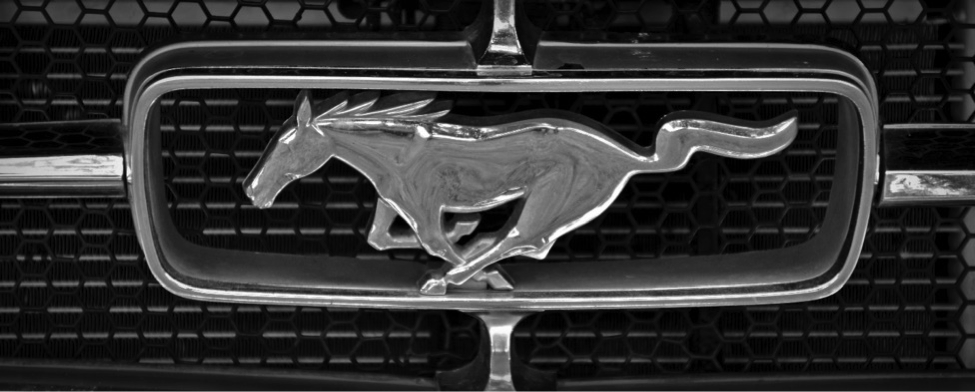
The Ford Mustang may be the most recognized American car in history. With a powerful V8 and stylish good looks, the Mustang has enjoyed decades of success, creating a loyal following of Mustang fanatics that rivals that of other American icons like the Corvette.
Much of its success and legendary status can be attributed to the various special edition models Ford has created over the years. Designed for the street, drag strip, or track, these low-volume, high-performance specials have excited even the most enthusiastic Mustang followers.
Here are eight of the best Mustangs to ever roll off the showroom floor:

Original 1964 ½ (1965) Ford Mustang 289
While the 289 Mustang was not the first model released, it arrived a short four months after the original Mustang’s introduction. Equipped with a 200-hp., 289-cu.-in. (4.7-ltr.) V8 and two-barrel carburetor, the fast, agile, and stylish Mustang proved wildly popular and inspired a host of competition. It captured the imagination of the public and kicked off the so-called “Pony Car” craze that is still alive and well to this day.

1965 Shelby GT 350
Many Mustang enthusiasts consider the 1965 Shelby GT 350 to be the best Mustang ever. The engineers at Ford and Shelby modified the 289-cubic-inch V8 power plant to produce a remarkable (for the period) 306 horsepower engine. The engine was called the “Cobra hi-riser” due to its high-riser intake manifold. The 1965 Shelby also removed the unnecessary rear seats; a move that was considered revolutionary at the time. The 1965 Shelby G.T. 350s were Wimbledon White and painted with Guardsman Blue rocker stripes.
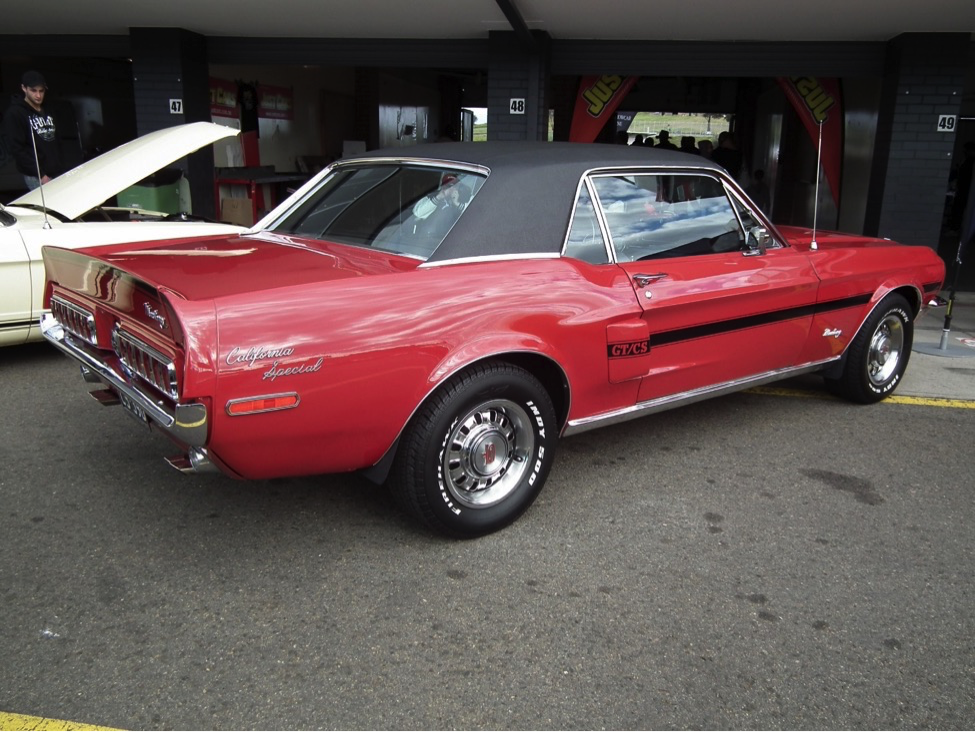
1968 Mustang GT/CS California Special
In 1968, auto dealers in California convinced the Ford Motor Company to create a special version of the Mustang specifically for their state. Shelby Automotive, part of Ford at the time, was assigned the task of designing and engineering the GT/CS. Called the California Special, the car borrowed heavily from the styling elements of the earlier Shelby Mustangs. It looked sportier and drove faster than previous Mustangs. Only 4118 of these cars were produced. Today, they are in high demand by collectors and have sold at auction for more than $500,000.
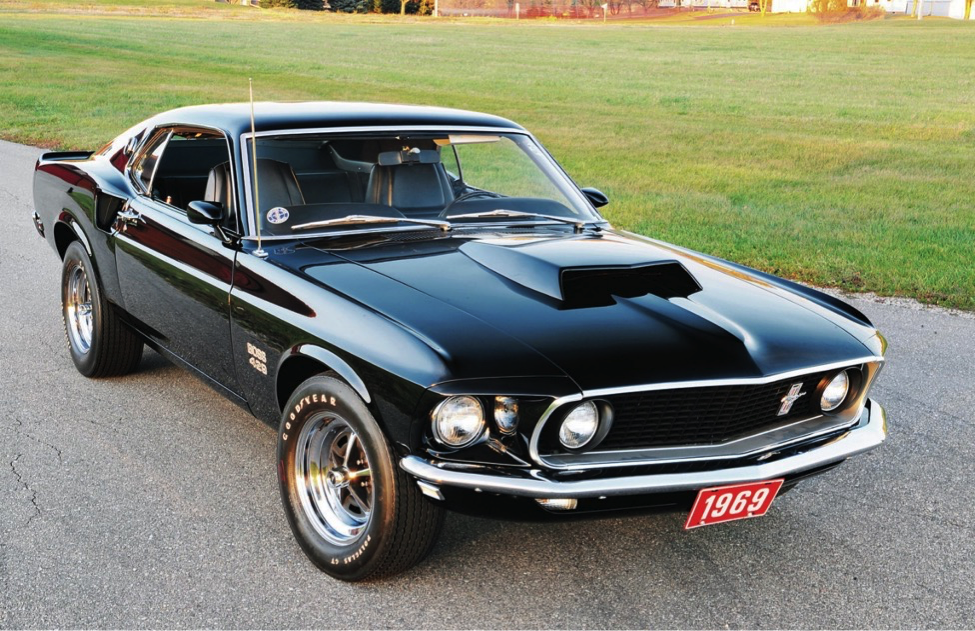
1969 Boss 429
Two very special Mustangs came into production in 1969 using the Boss moniker. Equipped with the smaller engine of the two, the Boss 302 was a near race car for the street. Designed to meet SCCA Trans-Am regulations, its exterior was stripped of any unneeded body cladding, a front lip spoiler was added, and it was fitted with an upgraded suspension and brakes.
However, as impressive as the Boss 302 was, the Boss 429 was superior. Ford made special modifications to the Mustang’s engine compartment to accommodate the 429-cubic-inch big-block V8 capable of producing 375 hp and 450 lb-ft of torque (the actual output was well over 500 horsepower).
In total, there were only 1358 original Boss 429s manufactured. Prized by automotive collectors and historians, many consider the Mustang Boss 429 to be the ultimate Mustang, for its exceptional style, impressive power, and excellent performance.

Ford Mustang Mach 1
The name Mach 1 implied speed and, indeed, this Mustang was very fast. First introduced in 1969, the Mach 1 offered three beefy V8 options, including the monster 428-cubic-inch Cobra Jet, and was only available in the “SportsRoof” (fastback) body style, never in the hardtop or convertible version.
The Mach 1 offered several engine options in 1971, including the 302-cu.in.-based Windsor motor, four 351-cu.in. Cleveland engines, and, at the top, were two 429-cu.in. high-performance mills. Probably the most recognizable feature of the ’71-’73 Mustangs is the unique hood with dual scoops. Though available as a visual, non-functional item, they could be made fully functional on models ordered with the Ram Air option.
The Mach 1 was featured in several films—most notable were the James Bond film, Diamonds Are Forever (1971) and a yellow 1973 Mach 1 was driven by H. B. Halicki in the 1974 film Gone in 60 Seconds.
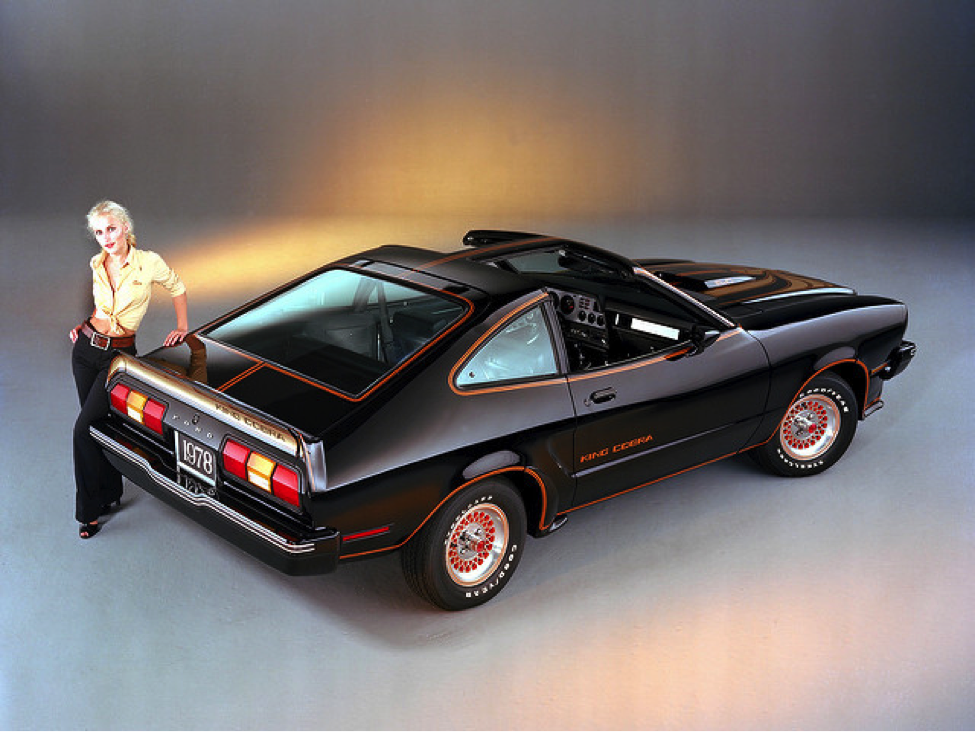
1978 King Cobra
The 1978 Mustang King Cobra is perhaps an exception to many of the downsized cars that epitomized the 1970s. The automobile marketplace was adjusting to the fuel crisis, increasing insurance rates, stricter emission standards, safety regulations, and downturns in the economy.
The King Cobra featured the then-innovative cobra snake hood decal and metal-spoked wheels with dash inserts. Offered only in a T-top, this car had style and power in equal measure. To help bolster The King Cobra’s performance image, it was available only with the V8.
Although criticized for being based on the much-maligned “Mustang II” that came out in 1976, the King Cobra was a dramatic improvement that included all the right exterior upgrades to look like a proper muscle car. With its 70s look, the King Cobra remains one of the top-selling Mustangs of all time and a favorite of Mustang purists everywhere.

2008 Mustang Bullitt
The 2008 Mustang released by Ford was meant as a tribute to the classic 1968 movie Bullitt on its 40th anniversary. During the movie, actor Steve McQueen drives a Ford Mustang GT Fastback in what is, arguably, the best car chase in cinematic history. The 2008 signature Mustang Bullitt came complete with the same dark green paint and black wheels as the one featured in the film.
The Bullitt used a version of the Mustang GT’s aluminum 4.6 L SOHC V8. A cold air intake, improved engine calibration, and a revised exhaust system were designed to mimic the sound of the Mustang used in the Bullitt movie. The gas cover on the 2008 Mustang is even inscribed with the word “Bullitt” on it. The powerful V8 engine, oversized wheels, and retro styling of the 2008 edition make this car a true collector’s item. Certainly, Steve McQueen himself would have been proud to get behind the wheel of this car.
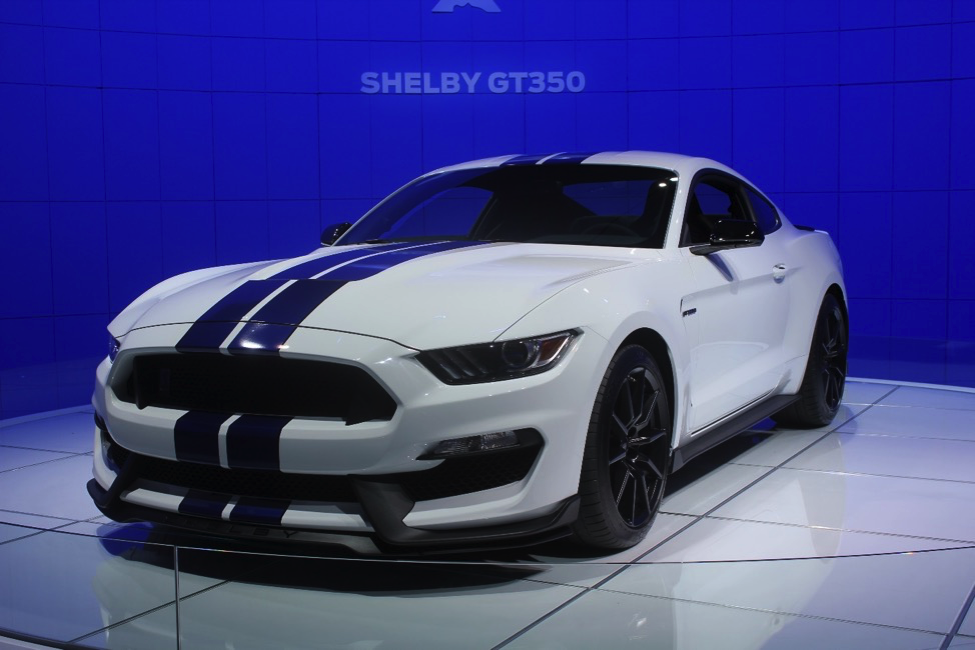
2016 Shelby GT350
What makes this car deserving of a place in the halls of Mustang lore is that it manages to do such a great job of mixing the old with the new. It still has great power with a 5.2-liter, 526 hp., 429 lb-ft of torque, V8, capable of reaching a zero-to-60-mph speed in 4.3 seconds. That’s the old.
The new focuses on the multilink rear axle. The new live rear axle gives the Mustang its best handling capability ever. Ford finally built a muscle car that can hold its own through corners. Manufactured in limited numbers for the 2016 model year and available in Grabber Blue starting for the 2017 model year, the GT350R is the creme de la creme of Ford performance cars.
Final Thoughts
While this list is by no means complete, it represents some of the finest Mustang cars ever built and demonstrates the commitment Ford Motor Company had through the years of producing a muscle car that would be the envy of its competitors.
Kruse Classics San Antonio
Thursday, August 31st, 2017Kruse Classics Austin TX 2017
Thursday, August 31st, 201710 Fastest American Cars Ever Made
Tuesday, August 29th, 201710 Fastest American Cars Ever Made
The American auto industry is in an era some people call the second coming of the golden age of vehicle production. The sheer power of muscle cars that once shook American highways during the 1960s and 1970s is reborn with contemporary technologies and designs. Many American-made vehicles in production today compete with or are even superior to the supercars from European master mechanics.
So, what are the fastest American cars ever made? Well, the term “fastest cars” in relation to vehicle speed can be considered several ways. First, the term “fastest cars” could relate to a vehicle’s acceleration speed. Acceleration speed is how quickly a vehicle can travel from 0 miles per hour (MPH), or resting, to another predetermined speed—usually to 60 MPH.
Second, the term “fastest cars” could refer to a vehicle’s potential top speed. A vehicle’s potential top speed can be defined as the maximum speed a vehicle could achieve under any operating condition.
Finally, the term “fastest cars” could relate to a vehicle’s sustainable top speed. A vehicle’s sustainable top speed refers to how fast a vehicle can travel at a constant rate without damaging its mechanical integrity.
American auto manufacturers produce their vehicles with safety and integrity in mind. American vehicle manufacturers integrate speed governors into their vehicles for the benefit of the vehicle’s equipment and the consumer’s investment. For example, if a car’s tires are speed tested to handle 200 MPH, then the vehicle’s speed governor will be calibrated to prevent that car from exceeding 200 MPH. Therefore, many of the fastest manufactured cars in America have potential top speeds greater than their factory calibrated sustainable top speeds.
We have compiled a top ten list that focuses on the fastest manufactured American made cars of all time that have sustainable tops speeds and maintain a street-legal status. Where there are discrepancies between models with similar sustainable top speeds, acceleration speed is also considered.
There are many privately built and customized vehicles in America. There are also many unique American-made vehicle prototypes that could leave the fastest manufactured vehicles in a cloud of burnt rubber. These vehicle types will not be considered on this list.
Here are the top 10 fastest street legal, sustainable speed, American-manufactured cars ever made:
10. Tesla P90D
Although the Tesla P90D is among many vehicles with a 155 MPH sustainable top speed, it is a noteworthy way to start the list because of its sheer internal power. The P90D packs an impressive 762 horsepower under the hood. Surely, without a speed governor, this 762-horsepower beast could go much faster.
However, the P90D is one of the most luxurious fastest American cars, and it is also among the very fastest when considering acceleration speed. The P90D’s acceleration speed is an awesome 0-60 MPH in just 2.8 seconds. This may not be the fastest sustainable speed car made in America, but it is competing with the top 3 for quickest acceleration speed.
9. Ford Shelby GT350
This Mustang has a sustainable speed of 180 MPH. Unlike its predecessors, however, the Shelby GT350 provides its driver several advantages. First, the vehicle’s handling has been significantly improved since earlier Shelby models. The car was also lightened by removing the rear seat and air conditioner. Also, the wheels are not made from carbon fiber. Considering these new features, combined with the vehicle’s 526 horsepower V8 engine, the GT350 can make 0-60 MPH in just 3.9 seconds. It is proudly produced in Flat Rock, Michigan.
8. Chevrolet Camaro ZL1
The supercharged 650 horsepower V8 in the Camaro ZL1 has a sustainable speed of 184 MPH. Overall, the Ford Shelby GT350 is widely considered a superior vehicle. However, an updated version of the ZL1 is expected sometime in 2017. This updated ZL1 is expected to compete with the GT350 for best overall muscle car for sheer power and overall value.
Where sustainable top speed is concerned, the ZL1 still beats the GT350 by a few MPH. It also slightly edges out the Shelby in acceleration speed, making it from 0-60 in just 3.5 seconds. This is another American-made beast assembled in Michigan.
7. Chevrolet Corvette Z06
Chevrolet has always been a top competitor when it comes to American sports cars, and the Corvette Z06 helps prove their worth. Although some Corvettes from Chevrolet’s past broke the iconic 200 MPH mark, the Z06 keeps its sustainable top speed at a comfortable 185 MPH.
What makes this model special, compared to its antiquated predecessors, is its refined design and 650 horsepower V8 engine. The 0-60 acceleration speed of only 2.95 seconds testifies to the massive power of this vehicle and helps assure its place as the 7th fastest sustainable speed American-made vehicle of all time.
6. Dodge Hellcat Challenger
Many believe Fiat Chrysler automobiles outdid themselves with the creation of the Dodge Hellcat Challenger. Not only does this vehicle look like a contemporary version of golden age muscle cars, but it also houses an enormous 707 horsepower supercharged V8 for less than 60,000 dollars.
The Hellcat Challenger comes in at number 6 of America’s fastest cars ever made because of its sustainable top speed of 199 MPH and 0-60 acceleration speed of 3.9 seconds. The Hellcat is unique because it is also available with an automatic transmission, which increases the acceleration speed to 3.6 seconds.
5. Equus Bass 770
Another powerhouse from the state of Michigan, this 640-horsepower sports car was revealed in 2014 and can maintain a sustainable top speed of 200 MPH. The Equus Bass gained a reputation not only for its speed and overall power but, also, for its design. Its design combines classic elements of the ‘67 Mustang Fastback, the ‘68 Camaro, and the ’71 Plymouth Satellite. The Bass 770 can accelerate from 0-60 in just 3.4 seconds.
4. Cadillac CTS-V
Cadillac has a reputation for combining quality, luxury, and power. Known as “the four-door Corvette” among auto enthusiasts, the Cadillac CTS-V achieves a sustainable top speed of 200 MPH. The Plymouth Superbird was also a contender for the number 4 spot, but it got pushed out because of this Cadillac’s acceleration speed. The CTS-V’s 640 horsepower supercharged V8 allows it to go from 0-60 MPH in only 3.7 seconds, also making in one of the fastest sedans on the market.
3. Dodge Hellcat Charger
If you like fast sedans, then you’ll love the Dodge Hellcat Charger. The Hellcat Charger is American made but is the fastest manufactured sedan in the world. With a sustainable top speed of 204 MPH and an acceleration speed of 0-60 in 3.7 seconds, this car just edges out the Cadillac CTS-V for the number-three fastest American car ever made. Housing a 707-horsepower engine under the hood, it’s not hard to see why.
2. Dodge SRT Viper
This massive 645 horsepower V10 engine can safely propel the Dodge Viper SRT at a sustainable top speed of 206 MPH. The SRT also has one of the fastest acceleration speeds of any American-made vehicle: 0-60 in 3.0 seconds. This vehicle is a testament to Dodge’s devotion to extraordinary sports car design and manufacturing, and it is another victory for Michigan automotive manufacturing since it is assembled in Detroit.
1. Hennessey Venom GT
The Hennessey Venom GT is the king of American-made sports cars. Although not as widely produced or affordable as many of the other cars on this list, the Hennessey Venom has the fastest sustainable top speed of any car in the world: 253 MPH (it can reach 270 MPH), and it has a 1,244 horsepower Twin Turbocharged V8 under the hood.
The 1,200 horsepower can propel this vehicle from 0-60 in just 2.7 seconds, and it can accelerate from 0-200 MPH in just 14.5 seconds. This car is proudly manufactured at Hennessey Performance Engineering in Texas.
Find any of these cars for sale right here at ACC- Start a New Search
And be sure to check out ACC Auctions – 7 Day Online Auctions for Classic Cars!
Top Cars of the 1950s
Wednesday, June 7th, 2017Top Cars of the 1950s
article written by: Josh Joubert
Some of the most iconic cars ever designed were manufactured in the post-war boom of the 1950s, which was a time of exploration and experimentation for the automobile industry. Advances in automotive technology sparked dramatic changes in manufacturing and efficiency, which caused significant economic growth and intense competition among automotive companies.
The average consumer had more disposable income after the American economy recovered from the war, which caused a hike in automobile prices. The thriving automotive industry created millions of jobs. In fact, one in six Americans employed at the time worked in the automotive industry in some capacity.
That economic environment, coupled with the emerging technology of the era, produced some of the best cars out there even today. Whether it’s a daily driver or a luxury car, they just don’t make them like they used to. Check out our top cars from the 1950s to see if your favorite model made the list.
-
1951 Studebaker Champion.
The 1951 model of the Studebaker Champion was part of the third generation of Studebaker Champions. The 1951 Champion was a more affordable version of the previous year’s model and also boasted better gas mileage compared to its 1950 counterpart.
The wraparound rear window was also a key feature of the style of the car’s body, offering greater visibility and lending a unique touch to the car’s design. The cost of a brand new Studebaker in 1951 was a little over $1,600. Today, you can buy the same car for $11,000. Still not bad for a classic.
-
1953 Buick Roadmaster Skylark.
Buick produced the 1953 Skylark convertible to mark the company’s 50th anniversary and to showcase GM’s design quality. Complete with whitewall tires, an impressive grille, and a swooping, waterfall-style front end, this American classic was considered top-of-the-line and even included electronic window controls. With a price tag of more than $5,000, the Skylark was one of the most expensive luxury cars on the market.
-
1953 Porsche 550 Spyder.
Okay, so this one’s not an American car, but it had such a profound impact on the racing industry that we just had to include it. The Spyder was the first of many racing cars built by Porsche. The prototype for the 1953 Spyder was built by hand. In 1953, the Spyder won its first race, thanks to its revolutionary design.
In fact, the Spyder was built so low to the ground that German Formula One driver Hans Herrman was able to drive it under lowered railroad crossing gates in 1954! After such an amazing feat, it’s no surprise the Spyder amassed racing victory after racing victory. Even with such an impressive racing record, the Spyder also doubled as an excellent daily driver, making it one of the most versatile cars on the market.
-
1954 Cadillac Eldorado.
You couldn’t have an article about the best cars of the 1950s and not feature the famous Eldorado. This car all but defined the era. That year brought forth the second generation of Eldorados at a lower cost compared to previous models.
Just over 2,000 units were produced that year, so the 1954 Eldorado quickly became a rare model that car collectors and enthusiasts scrambled to acquire. And, for just over $4,700, acquiring one back then wasn’t exactly financially feasible for the average consumer. If you wanted to buy a mint condition 1954 Cadillac Eldorado today, you’d need to shell out $96,000.
-
1955 Mercedes Benz 300 SL.
You got us – this one’s not American, either, but the 1955 Mercedes 300 SL is the definition of luxury and style. After all, James Bond drove one in Moonraker. The gullwing style of the doors was a revolutionary design, and the car included the first-ever fuel injection system produced.
Described as a race car for the street, the 300SL quickly became famous for having the top speed of any vehicle produced at the time. Today, you can pick up a mint condition Mercedes-Benz 300SL at auction for just $1,500,000. (It might seem a little pricey, but it is a vintage Mercedes, and it was featured in a Bond film. And Bond cars don’t exactly come cheap.)
-
1957 Ford Thunderbird.
The 1957 Ford Thunderbird was the last model of Ford’s first generation of Thunderbirds, complete with larger grilles and tailfins than previous models. The Thunderbird quickly established itself as the go-to choice for personal luxury cars.
Producing it was a bold move on Ford’s part – especially considering they’d primarily produced sports cars up until 1953 – but it turned out to be wildly successful for the company. The following year, Ford added a backseat to the Thunderbird. They continued to manufacture Thunderbirds until 2005, making it one of the most successful Ford models in the company’s history.
-
1957 Chevrolet Bel Air Convertible.
Anybody who was anybody in the 1950s wanted a Chevy convertible, and 1957 was certainly the year to get one. Chevrolet wanted to build an entirely new car for the 1955-1956 automotive year, but the chief engineer at Chevrolet wanted to make so many changes that production was pushed back an additional year.
While those changes caused the price of the car to skyrocket, the newly introduced features of the 1957 Chevrolet models established the Chevy as a classic car. The 1957 model of the Bel Air convertible was built lower to the ground and featured Chevy’s classic chrome headlight pods and tailfins for the very first time. The gold trim design added a luxurious touch to the convertible. Today, a mint condition 1957 Chevy Bel Air ranges from $37,000 to $120,000.
Modern cars are all about flashy technology and features, from built-in Wi-Fi and autonomous drivers to touchscreen radios and rearview cameras. The classic cars of the 50s, though, flawlessly combined luxury, style, and solid bodywork. No extra bells and whistles required. Granted, the 1950s saw the introduction of modern automotive staples such as seat belts, air conditioning, heating, power door and window controls, the V-8 engine, and fuel injection systems, among others.
The iconic cars of the 1950s not only paved the way for the cars we have today but established America as an international superpower. Even though America dominated the global automotive industry during the 1950s, countries like Germany and Italy produced some fine models of their own during that era, including the Porsche Spyder and the Alfa Romeo Giulietta. While these cars also went down in history as classics, they still couldn’t compete with the American cars of the 1950s.
What are your favorite cars from the 1950s? There are so many classics from the 1950s that it was impossible to include them all on our list. Let us know in the comments!
Top Cars of the 1960s
Friday, June 2nd, 2017Top Cars of the 1960s
article written by: Josh Joubert
The Top Cars of the 1960s: A new, streamlined approach to manufacturing, widely implemented in the 1950s, revolutionized the automobile industry, which opened the door for some of the incredible vehicles produced during the 1960s. While America dominated the global automotive industry during the 1950s, Europe assumed the throne during the 1960s.
Let’s take a look at some of our favorite vehicles from the swingin’ 60s, produced both at home and across the pond.
-
1961 Jaguar E-Type.
The E-Type is a testament to British style and ingenuity. This supercar convertible is capable of hitting 150mph, something a lot of modern cars still can’t do.
With its elongated front half and spoke rims, you might feel like James Bond or Austin Powers when you climb behind the wheel of one of these bad boys (even though Austin’s E-Type was a 1970.) In its prime, an E-Type would set you back about £2,000—just half the cost of a 1960s Aston Martin. Today, the price tag on a mint condition E-Type has increased a hundred-fold, as the E-Type can be yours for just $250,000.
1961 Austin Mini Cooper.
We couldn’t create a list of the best cars of the 60s and not include the Mini. People across the world are still in love with this cute little car, although we’d argue its modern models can’t hold a candle to their 60s predecessor.
It’s certainly not the fastest car in the world. Top speed is only 88 mph, and it takes a full 13 seconds to go from 0 to 60. Nevertheless, it was an affordable—and adorable—alternative to the flashier sports cars of the 60s.
-
AC Cobra.
This car is a classic example of how British and American engineering, when combined, can create timeless classics. Plus, we owe it all to a chicken farmer from Texas named Carroll Shelby.
When he was young, Shelby and a friend decided to race. Shelby drove a Cad-Allards, and his friend was in a MG TC. That race was what inspired Shelby to drop an American V-8 engine into the AC Ace.
And the rest, as they say, is history. Shelby went on to race for Aston Martin and Formula One before leaving his racing career behind to start his own company, and later collaborate with big names in the automotive industry.
-
1966 Lamborghini Miura.
You’d be hard pressed to find a list of the top cars from the 1960s that didn’t include this sexy supercar. Like almost every great car on our list, the Miura has its own intriguing back story.
Ferrucio Lamborghini, a Ferrari employee at the time, decided he didn’t like how Ferrari had designed one of his cars and gave his two cents on the matter. Ferrari promptly fired him, and Lamborghini decided he was going to open his own company.
The rest of the story practically tells itself. The Miura debuted three years after Lamborghini opened its doors, and its sharp design and mid-mounted V-12 turned the tables of the sports car industry forever.
-
1962 Ferrari 250 GTO.
Shortly before he sacked Lamborghini, Enzo Ferrari had a dispute with the chief designer of the 250 GTO, Giotto Bizzarrini, and fired him, too. But the hot-headed Italian struck literal gold with the Ferrari 250 GTO.
Only 39 were produced between 1962 and 1964. A new one cost $18,000, the equivalent of $144,000 in today’s money. Potential buyers had to be approved by none other than Enzo Ferrari himself.
It comes as no surprise that the 250 GTO is one of the most expensive cars ever sold at auction. One mint condition 1962 250 GTO sold for a cool $38.1 million.
-
Ford GT40.
Let’s bring it back home with the Ford GT40, although the British lent a helping hand with this one, too. The Mk I, II and III versions of the car were originally designed and built in Britain.
The Mk IV was designed and built in America, using American engines. The GT40 dominated at Le Mans four consecutive years, from 1966 to 1969. The Mk II took home the trophy in 1966, while none other than Henry Ford II himself watched on from the crowd.
This was the first time a car produced by an American manufacturer won Le Mans. The following year, the Mk IV claimed the victory, and has remained the only car entirely built and designed in the U.S. to ever win Le Mans.
-
1963 Corvette Sting Ray.
If you were fortunate enough to be an American in the 1960s, you wanted a Corvette Sting Ray, considered the third best car of the 1960s, according to Ranker. Chevrolet sold over 21,000 units of the 1963 model, which was a 50% increase from the previous year. Compared to the hefty price tag on the Ferrari and Lamborghini, a brand new Corvette Sting Ray was affordable at a little over $4,200.
If you wanted all the bells and whistles, the Corvette would set you back $6,200. Today, the price of a mint condition 1963 Sting Ray is still tame and just $69,000 will put the keys to a fully repaired vehicle in your hand. One of the most expensive 1963 Sting Rays sold for just $275,000, which was pennies compared to the GTO 250.
-
1965 Pontiac GTO.
When most people talk about the GTO, this is the car they’re usually referring to, not Ferrari’s multi-million dollar version. Car enthusiasts the world over claim the GTO started the muscle car trend that swept across the globe during the late 60s and early 70s. It even took home the Motor Trend Car of the Year award in 1968.
The GTO was also designed by John DeLorean, a name you might recognize if you’re a fan of Back to the Future. DeLorean was also responsible for the car’s name, GTO, which stands for Gran Turismo Omologato – Italian for “homologated for racing”. (Any idea where he got the idea from?)
Needless to say, car enthusiasts of the era weren’t exactly happy about this. Yet, the GTO is still praised as the quintessential muscle car.
Final Thoughts- Top Cars of the 1960s
While the 1950s was focused on style, comfort and affordability, the 1960s were all about flash, speed and expense. Racing became increasingly popular during the 1960s, and vehicle manufacturers could barely keep up. From Texan chicken farmers to posh Italian lads with bad tempers, the brains behind the brands created some truly unique supercars, and revolutionized the automotive industry as we know it.











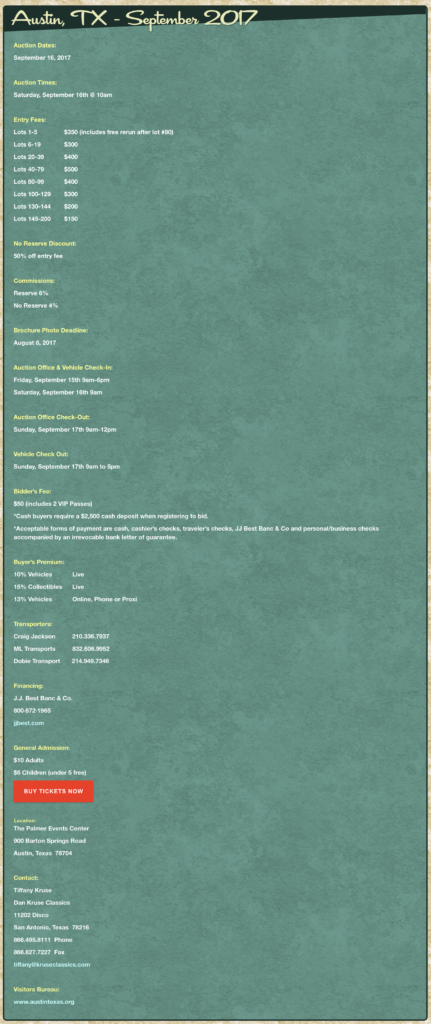










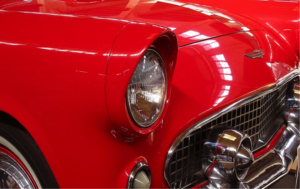
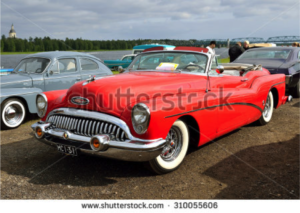
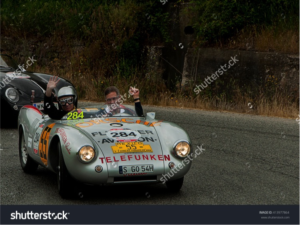
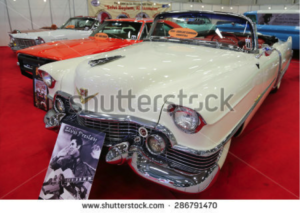
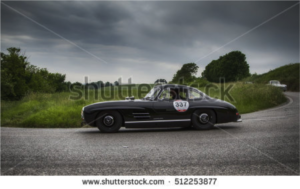
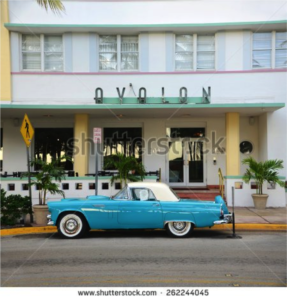






You must be logged in to post a comment.